
How to Use ESP-32 DEVKIT-V1 with Expansion Board: Examples, Pinouts, and Specs
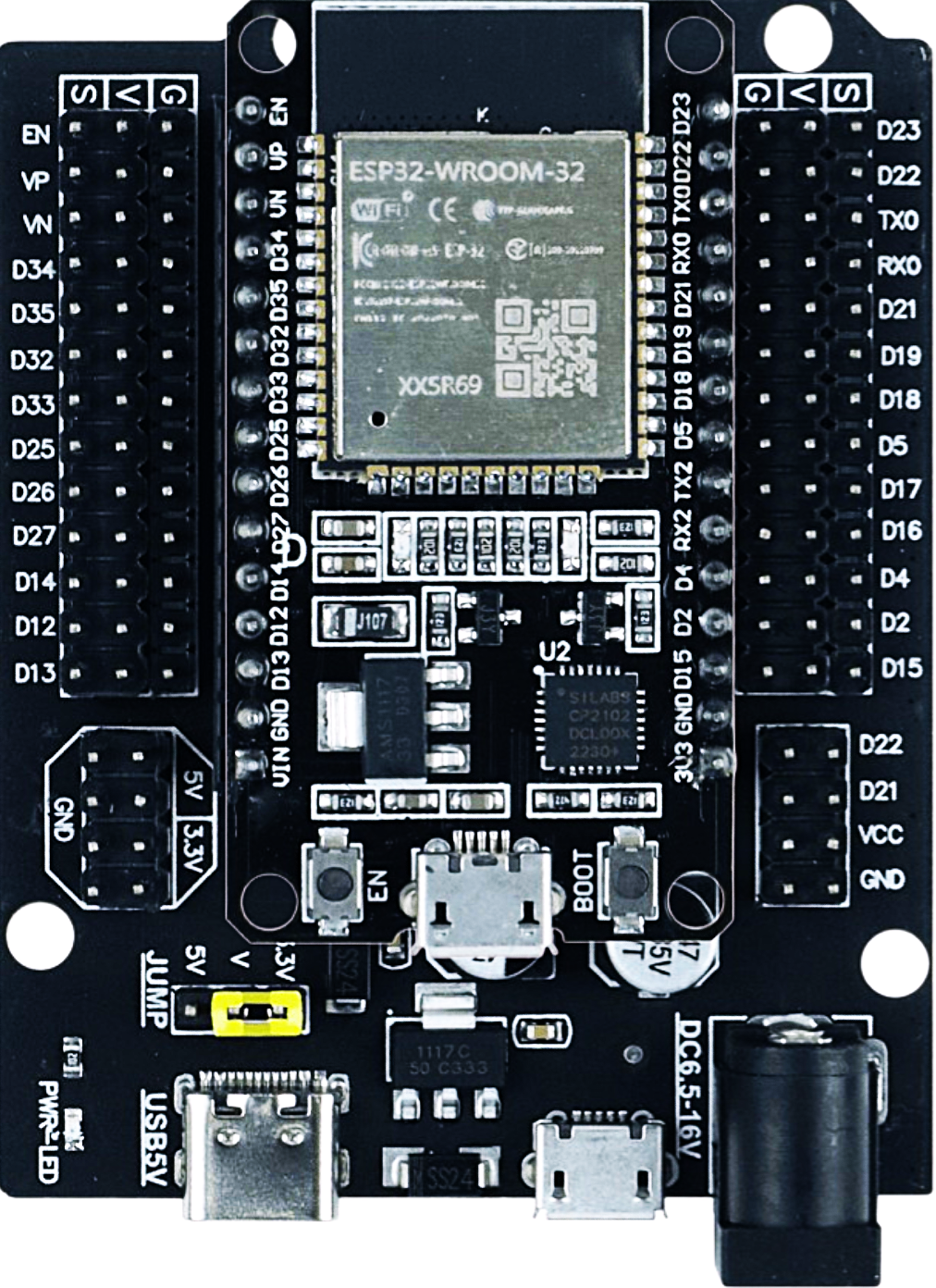
 Design with ESP-32 DEVKIT-V1 with Expansion Board in Cirkit Designer
Design with ESP-32 DEVKIT-V1 with Expansion Board in Cirkit DesignerIntroduction
The ESP-32 DEVKIT-V1 with Expansion Board, manufactured by Espressif, is a versatile development board designed for IoT (Internet of Things) applications. It features the powerful ESP32 chip, which integrates Wi-Fi and Bluetooth capabilities, making it ideal for wireless communication projects. The expansion board enhances the functionality of the ESP32 by providing additional GPIO pins, sensor interfaces, and prototyping-friendly features.
Explore Projects Built with ESP-32 DEVKIT-V1 with Expansion Board
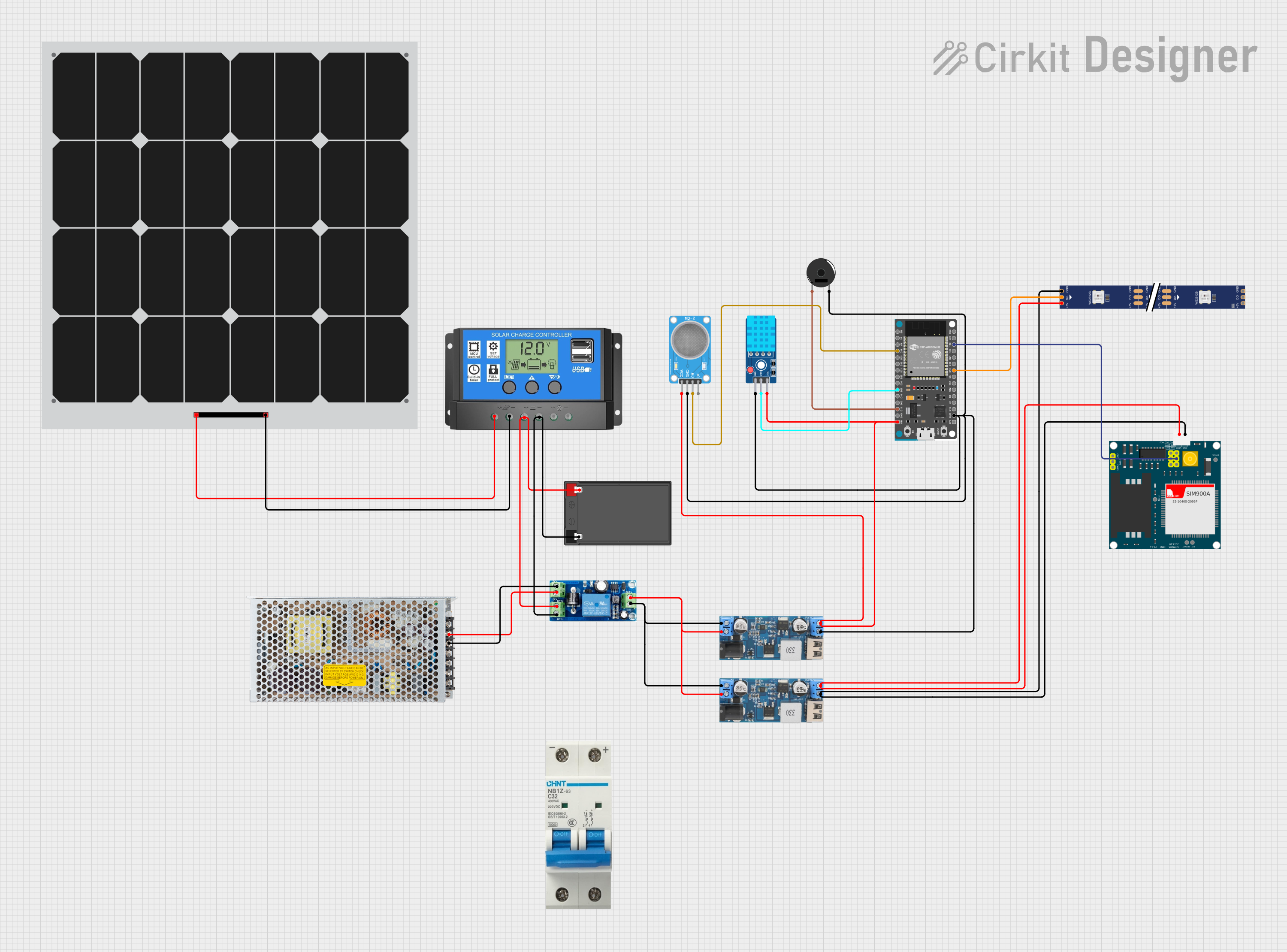
 Open Project in Cirkit Designer
Open Project in Cirkit Designer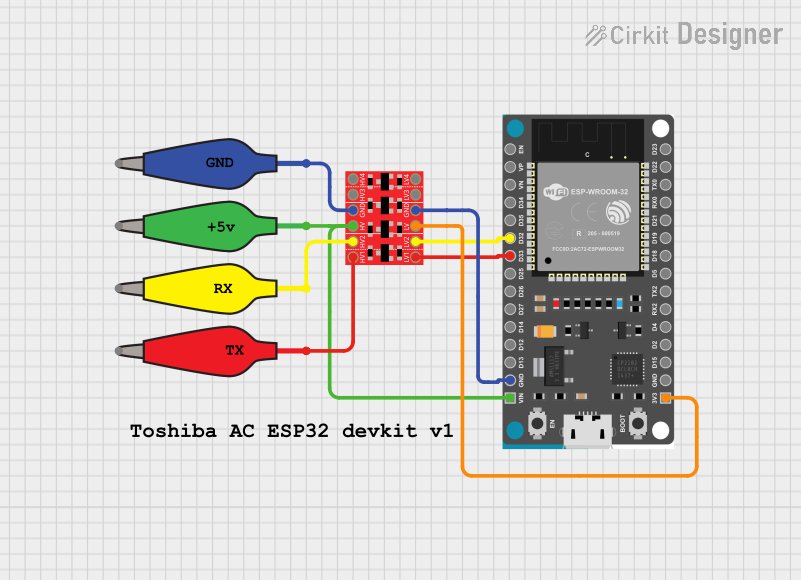
 Open Project in Cirkit Designer
Open Project in Cirkit Designer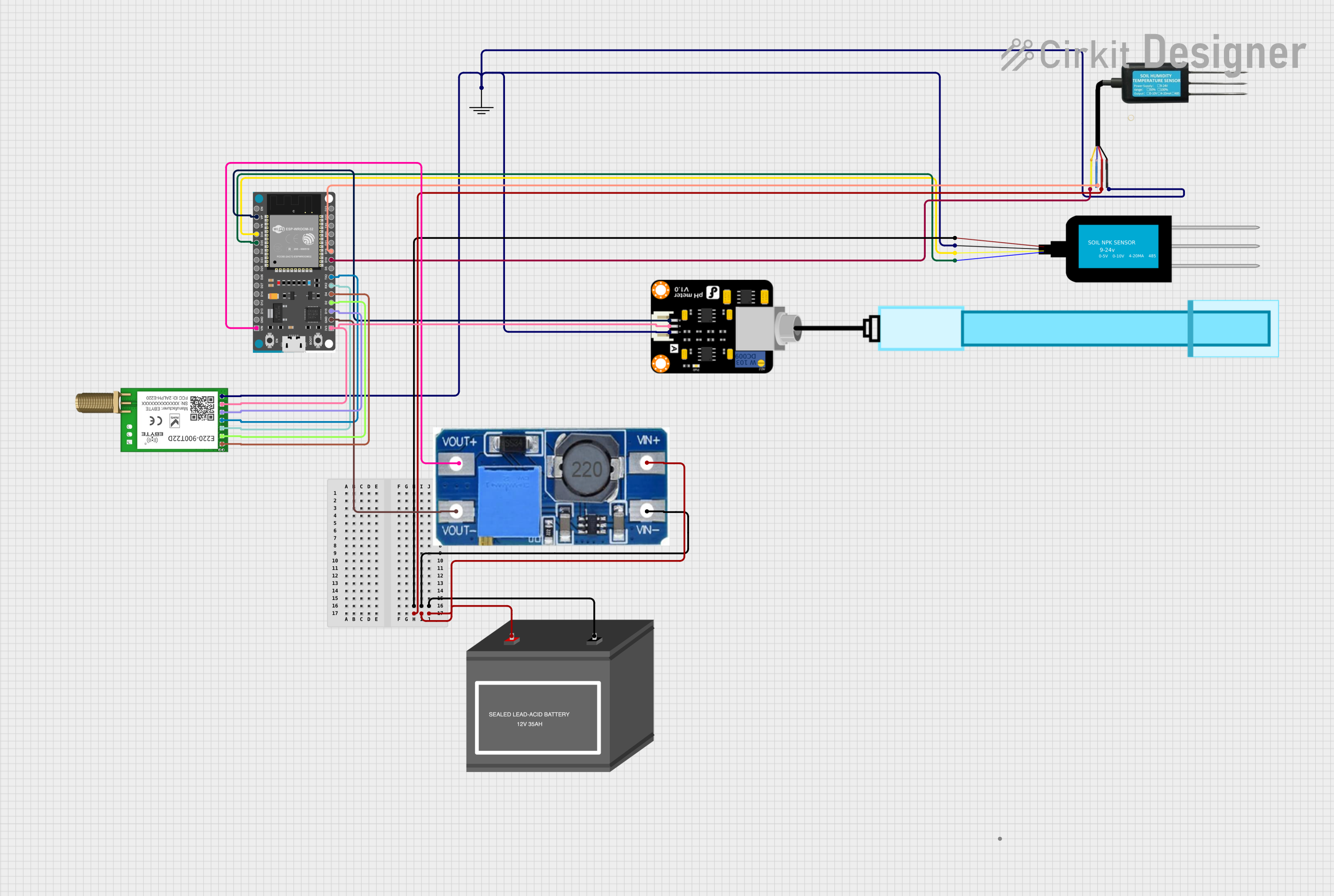
 Open Project in Cirkit Designer
Open Project in Cirkit Designer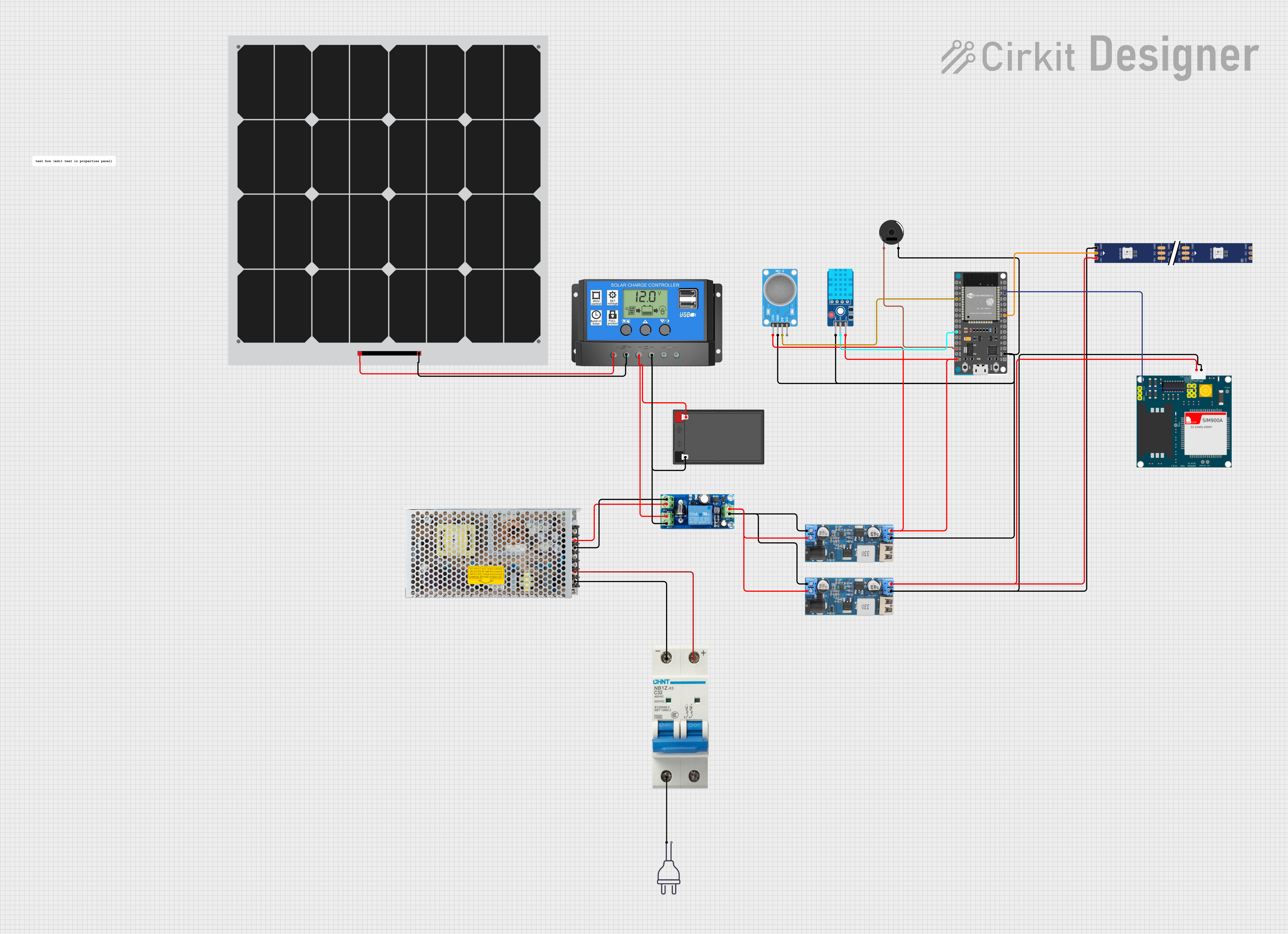
 Open Project in Cirkit Designer
Open Project in Cirkit DesignerExplore Projects Built with ESP-32 DEVKIT-V1 with Expansion Board

 Open Project in Cirkit Designer
Open Project in Cirkit Designer
 Open Project in Cirkit Designer
Open Project in Cirkit Designer
 Open Project in Cirkit Designer
Open Project in Cirkit Designer
 Open Project in Cirkit Designer
Open Project in Cirkit DesignerCommon Applications and Use Cases
- IoT devices and smart home automation
- Wireless sensor networks
- Wearable technology
- Robotics and automation systems
- Prototyping and educational projects
Technical Specifications
Key Technical Details
| Parameter | Specification |
|---|---|
| Microcontroller | ESP32 (dual-core Xtensa LX6 processor) |
| Clock Speed | Up to 240 MHz |
| Flash Memory | 4 MB (varies by model) |
| SRAM | 520 KB |
| Wireless Connectivity | Wi-Fi 802.11 b/g/n, Bluetooth 4.2 (Classic + BLE) |
| Operating Voltage | 3.3V |
| Input Voltage (VIN) | 5V (via USB or external power supply) |
| GPIO Pins | 30+ (varies with expansion board) |
| ADC Channels | 18 (12-bit resolution) |
| DAC Channels | 2 (8-bit resolution) |
| Communication Interfaces | UART, SPI, I2C, I2S, PWM |
| Power Consumption | Ultra-low power modes available |
| Dimensions | 54 mm x 27 mm (approx.) |
Pin Configuration and Descriptions
The ESP-32 DEVKIT-V1 with Expansion Board provides a variety of pins for interfacing with peripherals. Below is the pinout description:
| Pin Name | Functionality | Description |
|---|---|---|
| VIN | Power Input | Accepts 5V input from USB or external source |
| GND | Ground | Common ground for the circuit |
| 3V3 | Power Output | Provides 3.3V output for peripherals |
| EN | Enable | Resets the chip when pulled low |
| GPIO0 | General Purpose I/O | Used for boot mode selection |
| GPIO2 | General Purpose I/O | Can be used as PWM, ADC, or other functions |
| GPIO4 | General Purpose I/O | Supports ADC, PWM, and other functions |
| GPIO21 | SDA (I2C) | I2C data line |
| GPIO22 | SCL (I2C) | I2C clock line |
| TXD0 | UART Transmit | UART0 TX for serial communication |
| RXD0 | UART Receive | UART0 RX for serial communication |
| ADC1_CH0 | Analog Input | ADC channel 0 for analog signal measurement |
| DAC1 | Digital-to-Analog Converter | DAC output channel 1 |
Note: The exact pin availability and functionality may vary depending on the specific expansion board used.
Usage Instructions
How to Use the Component in a Circuit
Powering the Board:
- Connect the ESP-32 DEVKIT-V1 to your computer using a micro-USB cable. This will power the board and allow programming.
- Alternatively, supply 5V to the VIN pin and connect GND to the ground of your power source.
Programming the Board:
- Install the Arduino IDE and add the ESP32 board support package via the Board Manager.
- Select "ESP32 Dev Module" from the Tools > Board menu.
- Connect the board to your computer and select the appropriate COM port.
Connecting Peripherals:
- Use the GPIO pins to connect sensors, actuators, or other peripherals.
- Ensure that the voltage levels of connected devices are compatible with the 3.3V logic of the ESP32.
Uploading Code:
- Write your code in the Arduino IDE or another supported environment.
- Click the upload button to flash the code to the ESP32.
Important Considerations and Best Practices
- Voltage Levels: The ESP32 operates at 3.3V logic. Avoid connecting 5V signals directly to GPIO pins to prevent damage.
- Boot Mode: Ensure GPIO0 is pulled low during boot to enter programming mode.
- Power Supply: Use a stable power source to avoid unexpected resets or instability.
- Wi-Fi Antenna: Avoid placing metal objects near the onboard antenna to ensure optimal wireless performance.
Example Code for Arduino UNO Integration
Below is an example of using the ESP-32 DEVKIT-V1 to read data from a DHT11 temperature and humidity sensor and send it to a serial monitor:
#include <WiFi.h>
#include <DHT.h>
// Define DHT sensor type and pin
#define DHTPIN 4 // GPIO4 is connected to the DHT sensor
#define DHTTYPE DHT11 // DHT11 sensor type
DHT dht(DHTPIN, DHTTYPE);
void setup() {
Serial.begin(115200); // Initialize serial communication
dht.begin(); // Initialize the DHT sensor
Serial.println("DHT11 Sensor Test");
}
void loop() {
delay(2000); // Wait 2 seconds between readings
// Read temperature and humidity
float humidity = dht.readHumidity();
float temperature = dht.readTemperature();
// Check if readings are valid
if (isnan(humidity) || isnan(temperature)) {
Serial.println("Failed to read from DHT sensor!");
return;
}
// Print readings to the serial monitor
Serial.print("Humidity: ");
Serial.print(humidity);
Serial.print("% Temperature: ");
Serial.print(temperature);
Serial.println("°C");
}
Note: Ensure the DHT sensor is connected to GPIO4 and powered with 3.3V or 5V.
Troubleshooting and FAQs
Common Issues Users Might Face
Board Not Detected by Computer:
- Ensure the USB cable is functional and supports data transfer.
- Install the correct USB-to-serial driver for the ESP32.
Code Upload Fails:
- Check that the correct COM port and board type are selected in the Arduino IDE.
- Hold the "BOOT" button on the ESP32 while uploading the code.
Wi-Fi Connection Issues:
- Verify the SSID and password in your code.
- Ensure the Wi-Fi network is within range and operational.
Unstable Operation:
- Use a stable power supply with sufficient current (at least 500mA).
- Avoid excessive load on GPIO pins.
Solutions and Tips for Troubleshooting
- Reset the Board: Press the "EN" button to reset the ESP32 if it becomes unresponsive.
- Check Connections: Verify all wiring and connections to ensure proper functionality.
- Debugging: Use the Serial Monitor in the Arduino IDE to print debug messages and identify issues.
By following this documentation, users can effectively utilize the ESP-32 DEVKIT-V1 with Expansion Board for a wide range of IoT and prototyping applications.